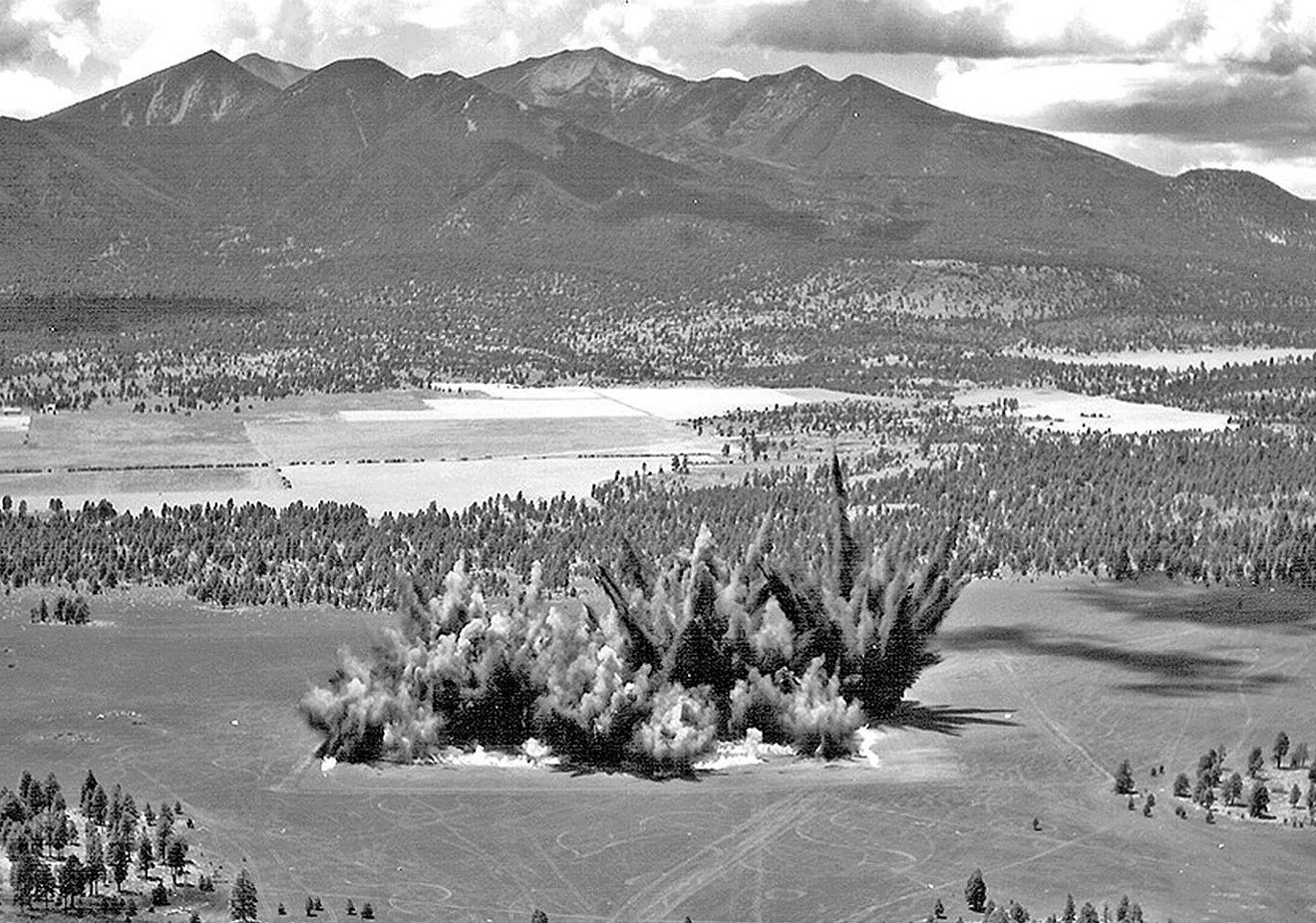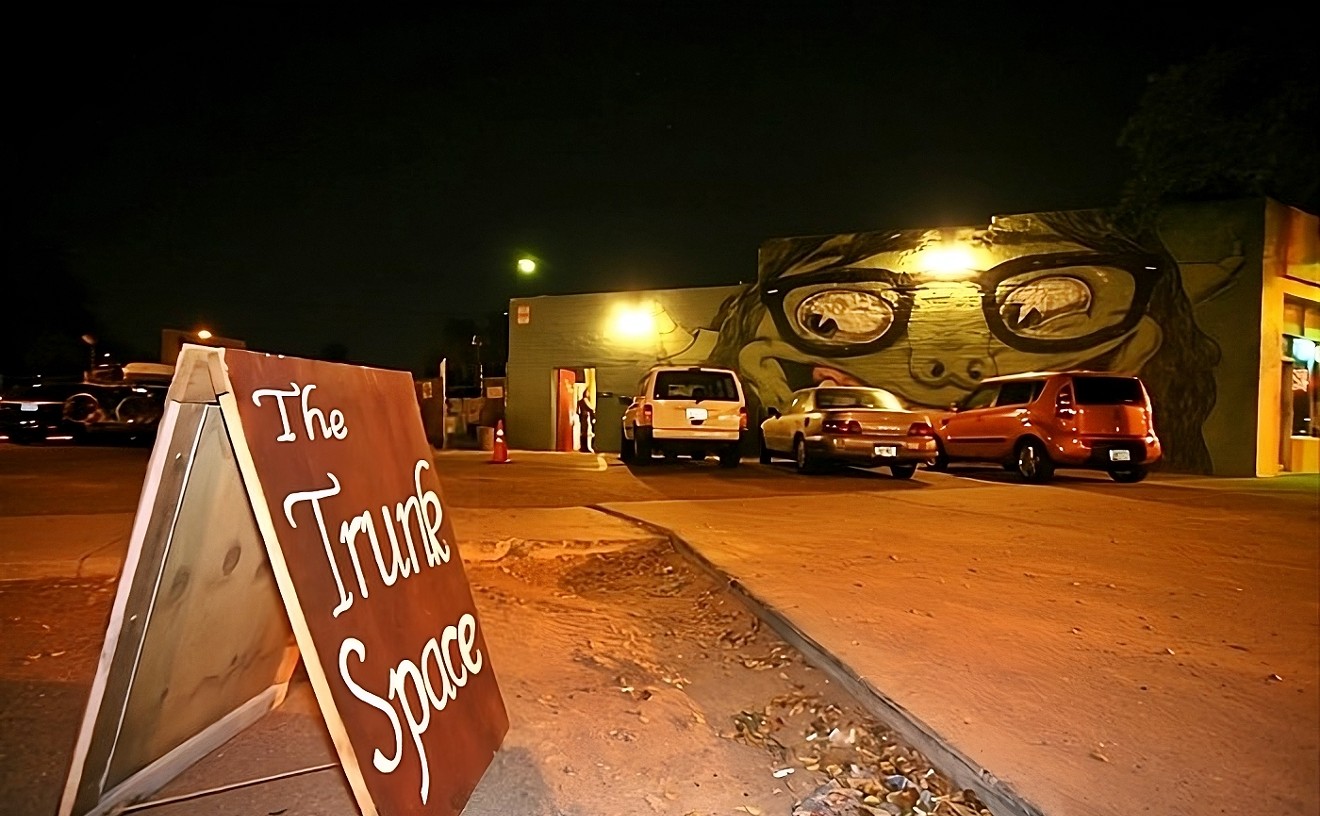Back in the 1960s, NASA and the United States Geological Survey made some big bangs in northern Arizona. And they did it to help prepare Apollo astronauts for walking on the moon.
As we detailed in this week’s issue of Phoenix New Times, USGS scientists and employees chose locations near Flagstaff and elsewhere in northern Arizona to train their all-American space rangers for their lunar missions.
To do so, they needed to create a realistic simulation of the lunar surface, particularly its array of craters. So in 1967, the USGS buried more than 300 pounds of dynamite and 67 tons of ammonium nitrate into a series of holes dug in the Cinder Lake lava fields just outside of Flagstaff.
Northern Arizona features the remains of several volcanic eruptions that took place within the last millennium. Ryan Anderson, a planetary scientist and developer at the USGS Astrogeology Science Center, told New Times that the hardened lava cinders and ash were comparable to the lunar soil.
“Most of the lunar surface is made of what we call regolith, which is rocks that have been busted up by billions of years of impact, and we can’t have that on Earth,” Anderson says. “But the cinders from the eruptions that became lava rock are the closest analog we have.”
To re-create the craters of the moon, which were born from eons of impacts by meteorites onto the lunar surface, the USGS and NASA had to use explosives.
The film, which was created by the USGS, shows how a mix of dynamite and ammonium nitrate was placed into excavated holes in two different fields in the Cinder Lake area.

Explosions in the Cinder Lake area outside of Flagstaff in the mid-1960s by NASA and the USGS.
United States Geological Survey
First, they made a series of test explosions to determine the exact amount of explosives needed to make craters of specific sizes. Then came even more big booms as the USGS staff created more than 400 craters in the Cinder Lake fields.
According to the film, the crater fields were originally meant to replicate Mare Tranquillitatis, also known as the Sea of Tranquility, the location where Apollo 11’s Neil Armstrong and Buzz Aldrin made humankind’s first steps onto the moon 50 years ago, on July 20, 1969. There was a last-minute change in plans, however, and the two wound up training in Sierra Blanca, Texas, and elsewhere.
Regardless, Cinder Lake became as accurate a representation of the lunar surfaces as NASA and the USGS could create. (Heck, even a number of conspiracy theorists and moon hoax bloggers have used the field’s creation as evidence that the lunar landings were staged.)
Close to a dozen Apollo astronauts trained at the Cinder Lake crater field, including Alan Bean, Pete Conrad, David Scott, James Irwin, Charlie Duke, Dick Gordon, Harrison Schmitt, Eugene Cernan, Al Worden, and James Irwin.
Setting off huge explosions and training astronauts wasn't the only thing going on in northern Arizona at the time. NASA and the USGS also tested an actual rocket backpack in the Hopi Buttes lava fields on the Navajo Nation in the early 1960s.
Another USGS-created short film chronicles the testing of the device for potential use on the moon. In the early days of the Apollo program, NASA was considering multiple options for getting astronauts across the lunar surface as quickly and efficiently as possible.
One such option was a Bell Aerospace-created rocket pack, which was powered by hydrogen peroxide and nitrogen.
The USGS field-tested the device in the Hopi Buttes in August 1966. While it never was used on the moon, similar Bell Aerospace rocket packs appeared in the James Bond flick Thunderball and were used during the opening ceremonies of the 1984 Summer Olympics in Los Angeles.












